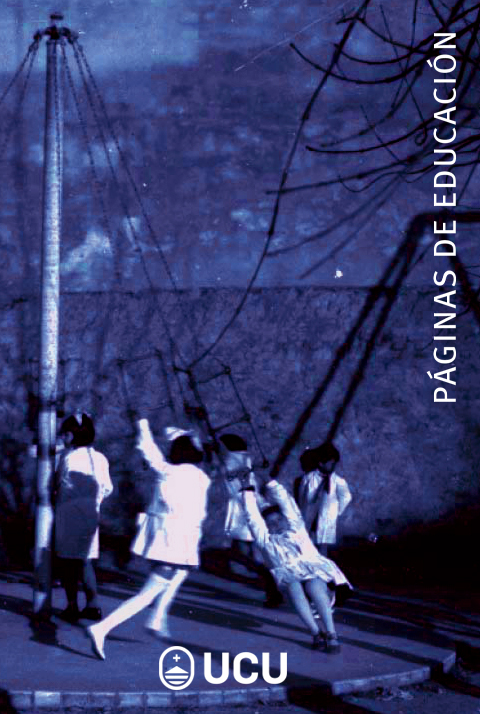The Sense of Belonging, a Strategy of Improvement in the Training Process in the Arts. Case Study in Dance at a Mexican University
DOI:
https://doi.org/10.22235/pe.v13i2.2172Keywords:
sense of belonging, higher education, dance, artsAbstract
The sense of belonging is a feeling of identity that individuals generate with the community with which they interact to achieve common goals. The arts, in turn, demand the consolidation of an identity and the dissemination of artistic experiences in the classroom. For this reason, this study aims to find out how the sense of belonging is presented from the student's point of view in the Dance Degree of the Benemérita Universidad Autónoma de Puebla (BUAP), Mexico. A quantitative study was conducted through a questionnaire that evaluated the sense of belonging in four dimensions (psychological-social, affective, academic and physical). The results indicate that the academic and social dimensions require actions aimed at self-confidence and approaching the work environment. Analyzing the sense of belonging allows the construction of common meanings that strengthen the professional formation of the students.
Downloads
References
Baumeister, R., y Leary, M. (1995). The need to belong: Desire for interpersonal Attachments as a Fundamental Human Motivation. Psychological Bulletin, 117(3). Recuperado de https://www.researchgate.net/publication/15420847_The_Need_to_Belong_Desire_for_Interpersonal_Attachments_as_a_Fundamental_Human_Motivation
Brea, L. (2014). Factores determinantes del sentido de pertenencia de los estudiantes de Arquitectura de la Pontificia Universidad Católica Madre y Maestra, Campus Santo Tomás de Aquino (Tesis de doctorado). Recuperado de https://www.tdx.cat/bitstream/handle/10803/284952/TLMBA.pdf?sequence=1
Freeman, T., Anderman L., y Jensen J. (2007). Sense of belonging in college freshmen at the classroom and campus levels. The Journal of Experimental Education, 75(3), 203-220.
Giovine Yáñez, M. A. (2015). Paradojas del arte contemporáneo. Tópicos del Seminario, (34),155-171. Recuperado de https://www.redalyc.org/articulo.oa?id=594/59443297008
Guzmán, C., y Saucedo, C. (2007). La voz de los estudiantes: experiencias en torno a la escuela. Barcelona, España: Ediciones Pomares.
Haussmann, L., Schofield, J., y Woods, R. (2007). Sense of belonging as a predictor of intentions to persist among African American and white first-year college students. Research in Higher Education, 48(7), 803-839.
Hopenhayn, M., y Sojo, A. (Eds.). (2011). Sentido de Pertenencia en sociedades fragmentadas: America Latina en una perspectiva global. Buenos Aires, Argentina: Siglo XXI.
Huerta, A. (2018). El sentido de pertenencia y la identidad como determinante de la conducta, una perspectiva desde el pensamiento complejo. IE Revista de investigación educativa de la REDIECH, 9(16), 83-97.
Lynton, A. (2006). Crear con el movimiento: la danza como proceso de investigación. REencuentro. Análisis de Problemas Universitarios, (46), 51-57.
Mellor, D., Stokes, M., Firth, L., Hayashi, Y., y Cummins, R. (2008). Need for belonging, relationship satisfaction, loneliness, and life satisfaction. Personality and Individual Differences, 45(3), 213–218. https://doi.org/10.1016/j.paid.2008.03.020
Ministerio de Educación del Gobierno de España. (2010). Informe anual sobre el estado y situación de las Enseñanzas Artísticas. Recuperado de https://sede.educacion.gob.es/publiventa/descarga.action?f_codigo_agc=14678_19
Muntañola, J. (2004). Arquitectura, educación y dialogía social. Revista Española de Pedagogía, 62(228), 221-228. Recuperado de https://revistadepedagogia.org/lxii/no-228/arquitectura-educacion-y-dialogia-social/101400010502/
Morrison, M., Epstude, K., y Roese, N. (2012). Life regrets and the need to belong. Social Psychological and Personality Science, 3(6), 1-7. https://doi.org/10.1177/1948550611435137
Negrini, I. (2010). Involucramiento de las estudiantes y los estudiantes en el proceso educativo. Revista Iberoamericana sobre Calidad, Eficacia y Cambio en Educación, 8(1), 63-78.
Osterman, K. (2000). Students' Need for Belonging in the School Community. Review of Educational Research, 70(3), 323-367. https://doi.org/10.3102/00346543070003323
Pino, T., Cavieres, E., y Muñoz, J. (2018). Los factores personales e institucionales en el sentido de pertenencia de estudiantes chilenos a lo largo de sus estudios superiores. Revista Iberoamericana de Educación Superior, 9(25), 24-41. Recuperado de https://www.redalyc.org/articulo.oa?id=2991/299158443002
Tortajada, M. (2008). La investigación artística mexicana en el siglo XX. Cultura y Representaciones Sociales, 2(4), 169-196.
Torres, T. (2106). Del arte por el arte a las artes comprometidas con las comunidades: paradigmas actuales entre educación y artes. Pensamiento, Palabra y Obra, 16, 14-23. Recuperado de http://www.scielo.org.co/pdf/ppo/n16/n16a03.pdf
Turner, J. (1990). Redescubrir el grupo social. Una teoría de la categorización del Yo. Madrid, España: Ediciones Montara. Recuperado de https://sociopsicologia.files.wordpress.com/2010/10/una-teoria-de-la-categorizacion-del-yo-turner.pdf
Downloads
Published
How to Cite
Issue
Section
License
Copyright (c) 2020 Páginas de Educación

This work is licensed under a Creative Commons Attribution 4.0 International License.
- The authors will retain their copyrights and guarantee the journal the right of first publication of their work, which will be simultaneously subject to the Creative Commons Recognition License that allows third parties to share the work provided that its author is indicated and Your first publication in this journal.
- Authors may adopt other non-exclusive license agreements for the distribution of the version of the published work provided that the initial publication in this journal is indicated.
- Authors are allowed and recommended to disseminate their work through the Internet after the publication process, which can produce interesting exchanges and increase citations of the published work. (See The effect of open access).















